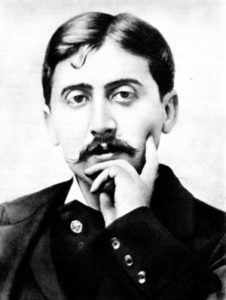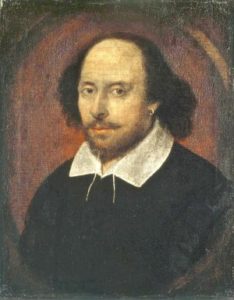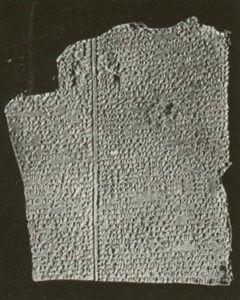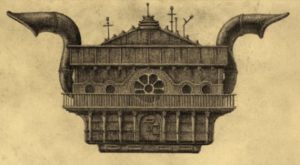Time in Literature

Just as time is a fundamental element of our existence, it has also been a fundamental element in literature for almost as long as literature has existed.
Clearly, all stories take place in time to some extent. Regardless of the way a story may deal with time (e.g. chronological development, real-time narration, flashbacks, flashforwards, random temporal progressions, etc), it is still the passage of time that allows plots to unfold, characters to be drawn, etc. But what we are talking about here is literature where time, and the passage of time, is a major theme, and sometimes almost a character in its own right.
Time as a theme in literature, though, is a potentially immense subject, and well beyond the scope of this website sub-section. However, at least a few aspects of it may be outlined here. The lists of books and works mentioned below are necessarily circumscribed and incomplete, and the examples used necessarily a limited and subjective choice.
Time in Novels
A work of literature can be thought of as involving four different and potentially quite separate time frames: author time (when the work was originally written or published); narrator time (when the narrator in a work of fiction supposedly narrates the story); plot time (when the action depicted actually takes place); and reader or audience time (when a reader reads the work or sees it performed). These may all be relatively close together, but they may not be – consider Walter Scott’s novel Rob Roy, for example: although we may read it in the early 21st Century, it was written and published in 1817, it deals with plot events around a century earlier (1715), and it is narrated by an old man looking back some 50 years or so at his youth – four different time frames over a three hundred year period.
The time frame of a particular scene is usually established, or at least hinted at, early on, as part of the setting details. This is usually an important factor both in the plot development and as an additional indication of the characters’ backgrounds and attitudes. The time setting may involve specific references to dates or events, or it may be more subtly indicated by references to clothing, furniture, etc. For a story arc covering shorter periods, indications of the season, the time of day, or even the hour, may be more relevant. Typically, the passage of time from one scene to another is also expressly indicated, either at a chapter break or within a chapter, although there may also be specific literary reasons to make such time advances less obvious.
The standard story-telling technique involves a straightforward chronological plot. Often the period covered is a person’s lifetime, or some segment thereof, but historical novels like Edward Rutherfurd’s Sarum (1987) and London (1997) may cover many centuries or even millennia. Fyodor Dostoyevsky’s Crime and Punishment (1866), on the other hand, describes the protagonist’s inner thoughts in such minute detail that the plot actually unfolds over a period shorter than the average reader takes to read it.

Marcel Proust’s monumental À la recherche du temps perdu (In Search of Lost Time, 1913-27), though, ignores the constraints of linear time completely, constantly intermingling past and present. Ford Madox Ford’s The Good Soldier (1915), is a good example of the use of flashbacks and flashforwards in time, although flashbacks and back-stories are time-honoured techniques going back at least to Homers Odyssey (c. 8th Century BCE). In the fantasy world of Alice’s Adventures in Wonderland (1865) and Through the Looking Glass (1871), Lewis Carroll plays fast and loose with the passage of time (as exemplified by the Mad Hatter’s watch which shows months not hours), to the extent that chronology becomes all but irrelevant.
In both the modernist era of the early 20th Century and the postmodern era after the Second World War, the use of temporal distortion, fragmentation and non-linear timelines in novels became popular tools. Modernist authors include Virginia Woolf, James Joyce, D.H. Lawrence, William Faulkner, Franz Kafka, etc; postmodernists include Samuel Beckett, William Burroughs, Vladimir Nabokov, Kurt Vonnegut, Thomas Pynchon, etc.
The passage of time is a particularly important theme in Thomas Mann’s The Magic Mountain (1924). In a tuberculosis sanitarium high in the Swiss Alps, time initially passes with excruciating slowness for the protagonist, although as daily routine merges into monthly, and monthly into yearly, time begins to accelerate. In the lush tropical setting of Gabriel García Márquez’s One Hundred Years of Solitude (1967), on the other hand, there is almost no real sense of time passing, even as generation after generation of the Buendia family lives and dies throughout the story’s course, and time often appears circular and fluid.
The mystery and detective novel genre – widely regarded as having begun with Edgar Allan Poe’s short story The Murders in the Rue Morgue (1841) and others, and developed through Wilkie Collins’ The Woman In White (1859) and The Moonstone (1868), to the bestsellers of Arthur Conan Doyle, Agatha Christie, Raymond Chandler and others – often turns the passage of time on its head. Contrary to the plot-lines of classical tragedy, where a character’s fatal flaws and hubris typically lead gradually and inevitably to an unpleasant end, detective stories usually start with the unpleasant event and work backwards in time in order to uncover the reasons why the present turns out as it is.
There are other examples of novels that progress both forwards (in some respects) and backwards in time. F. Scott Fitzgerald’s 1921 short story The Curious Case of Benjamin Button follows the life of a character who is born as a 70-year-old man who then ages backwards, growing from an adult into a moody teenager and then a young child, a baby and, ultimately, oblivion. Martin Amis’ Time’s Arrow (1991) recounts the life of a German doctor in a disorienting reverse chronology, beginning with his life in retirement in America, then his practice as a doctor, and then “back” to his participation in the Nazi Holocaust. But here the reverse chronology also results in reverse morality, so that blows heal injuries, theft becomes donation, etc, and the doctor’s torture and murder of Jews at Auschwitz is transformed into the creation of life and healing of the sick.
Reverse chronology is also employed in movies such as 2000’s Memento (in which a series of chronological sequences of scenes in black-and-white are interspersed with color sequences in reverse chronology, which “meet” at the end of the film, producing one common story), and 2002’s Irréversible (which contains 13 harrowing scenes presented in reverse chronological order, concluding with the recurring motif that “time destroys everything”).
Time in Poetry
There are literally thousands of poems about time, and only a few can be mentioned here.
The well-known Latin phrase tempus fugit – literally meaning “time flees”, but more commonly translated as “time flies” – is usually considered to have come from Virgil’s long didactic poem, Georgica or The Georgics (29BCE): “Sed fugit interea, fugit inreparabile tempus, singula dum capti circumvectamur amore“ (“But meanwhile it flees: time flees irretrievably, while we wander around, prisoners of our love of detail”). But similar sentiments appear in the Carmina (Odes) by fellow Roman poet Horace at around the same time: “Dum loquimur, fugerit invida Ætas: carpe diem” (While we are speaking, envious time will have fled: seize the present day”).
The Bible, of course, contains many references to time and its effects, perhaps the best known of which comes in Ecclesiastes 3 and is spoken by King Solomon: “There is an appointed time for everything. And there is a time for every event under heaven – A time to give birth, and a time to die; A time to plant, and a time to uproot what is planted. A time to kill, and a time to heal; A time to tear down, and a time to build up. A time to weep, and a time to laugh; A time to mourn, and a time to dance. A time to throw stones, and a time to gather stones; A time to embrace, and a time to shun embracing. A time to search, and a time to give up as lost; A time to keep, and a time to throw away. A time to tear apart, and a time to sew together; A time to be silent, and a time to speak. A time to love, and a time to hate; A time for war, and a time for peace.”

William Shakespeare’s Sonnet XIX (1609) calls on a personified Time not to wreak its usual havoc on his sweetheart’s face, but vows that, whatever Time’s effects, his love will endure though poetry (“Yet, do thy worst, old Time: despite thy wrong, My love shall in my verse ever live young”). Shakespeare’s plays are also scattered with many poetical references to the effects of time, one of the best known occurring in Macbeth (1606): “Tomorrow, and tomorrow, and tomorrow, Creeps in this petty pace from day to day, To the last syllable of recorded time; And all our yesterdays have lighted fools The way to dusty death”. The commonly quoted lines “Time is too slow for those who wait, too swift for those who fear, too long for those who grieve, too short for those who rejoice, but for those who love, time is eternity”, often mistakenly attributed to Shakespeare, are actually by the American minister Henry Van Dyke and date from as recently as 1905.
John Milton wrote many a line decrying the way in which time steals away our youth, including the poem On Time (c. 1630), which begins “Fly envious Time, till thou run out thy race, Call on the lazy leaden-stepping hours, Whose speed is but the heavy Plummets pace…” and Sonnet XII (1631) which begins “How soon hath Time the suttle theef of youth, Stoln on his wing my three and twentieth yeer!”. Alexander Pope wrote some similar lines about how time steals our youth and our very lives in his Imitations of Horace (1733-8): “Years following years steal something ev’ry day. At last they steal us from ourselves away”. Pope’s near contemporary Edward Young added in his poem Night Thoughts (1742-5): “The bell strikes one. We take no note of time But from its loss: to give it then a tongue Is wise in man”. Also around the same time, Jonathan Swift’s short poem On Time characterizes time as relentless and ravenous: “Ever eating, never cloying, All-devouring, all-destroying, Never finding full repast, Till I eat the world at last”.
The passage of time was a major preoccupation of the 19th Century Romantic poets. Childe Harold’s Pilgrimage, a long poem by Lord Byron written in 1816-8, contains many references to time and the impossibility of defying it, including lines like: “Yet Time, who changes all, had altered him In soul and aspect as in age; years steal Fire from the mind as vigour from the limb And life’s enchanted cup but sparkles near the brim”, and “O Time! the beautifier of the dead, Adorner of the ruin, comforter And only healer when the heart hath bled – Time! the corrector where our judgments err”. Alfred Lord Tennyson’s poem The ‘How’ and the ‘Why’ contains the lines: “Some say this life is pleasant, Some think it speedeth fast: In time there is no present, In eternity no future, In eternity no past.” Tennyson’s poem Tithonus (1859) relates the Greek myth of a lover granted everlasting life but without the additional boon of everlasting youth, so that he aged and withered horribly until he begged for the mercy of death.
Fellow Romantic poet Charles Cowden Clarke wrote in his 1875 sonnet The Course of Time: “No! no arresting the vast wheel of time, That round and round still turns with onward might, Stern, dragging thousands to the dreaded night Of an unknown hereafter”. In his 1862 poem on old age and mortality The Dead Pope, Owen Meredith (Lord Lytton) muses: “However we pass Time, he passes still, Passing away whatever the pastime, And, whether we use him well or ill, Some day he gives us the slip for the last time”. Thomas Love Peacock also wrote a poem called Time (date uncertain, but of the same period) which includes lines like: “Man yields to death; and man’s sublimest works Must yield at length to Time”, and “Time is lord of thee: Thy wealth, thy glory, and thy name are his”. Oliver Wendell Holmes’s poem Our Banker (1874) sees time as a miserly banker who never forgets a debt: “Old Time, in whose banks we deposit our notes Is a miser who always wants guineas for groats … We see that Time robs us, we know that he cheats But we still find a charm in his pleasant deceits”.
Time is a major theme in Walt Whitman’s 1855 poem Leaves of Grass, particularly the idea that time is a continuous flow and that past, present and future cannot be considered as separate and distinct, and also that time is a kind of perfect entity: “A word of the faith that never balks, Here or henceforward it is all the same to me, I accept Time absolutely. It alone is without flaw, it alone rounds and completes all, That mystic baffling wonder alone completes all”.
The Loom of Time, which begins “Man’s life is laid in the loom of time To a pattern he does not see, While the weavers work and the shuttles fly Till the dawn of eternity”, is an often quoted poem, frequently used at funerals, although its author and provenance is unknown. Henry Austin Dobson’s 1886 poem The Paradox of Time also rests on the idea that time goes on forever, while we humans come and go in the blink of an eye: “Time goes, you say? Ah no! Alas, Time stays, we go”.
Individual lines from the poems of Rabindranath Tagore are often mentioned in the context of poems about time, e.g. “The butterfly counts not months but moments, and has time enough” from Fireflies (1928); “Time is a wealth of change, but the clock in its parody makes it mere change and no wealth” from Stray Birds (1916); and “Let your life lightly dance on the edges of Time like dew on the tip of a leaf” from The Gardener (1913); etc. But in fact these are poems about love, nature, simplicity, etc.
Robert Service’s poem It Is Later Than You Think (1921) ends each stanza with the title lines as the poet laments how time passes irrevocably and how he never seems to find time to write his poetry. The poem ends with “Ah! the clock is always slow; It is later than you think; Sadly later than you think; Far, far later than you think.”
T.S. Eliot’s Four Quartets (1935) includes an extended rumination on the nature of time, including the well-known lines: “Time present and time past Are both perhaps present in time future, And time future contained in time past. If all time is eternally present All time is unredeemable”. Eliot’s contemporary W.H. Auden also wrote several poems on the subject of the passing of time, among them As I Walked Out One Evening (1937), which includes the memorable lines: “But all the clocks in the city Began to whirr and chime: O let not Time deceive you, You cannot conquer Time”.
This riddle about time appears in J.R.R. Tolkein’s The Hobbit (1937): “This thing all things devours: Birds, beasts, trees, flowers; Gnaws iron, bites steel, Grinds hard stones to meal; Slays king, ruins town, And beats high mountain down”.
Immortality in Literature

Immortality, or everlasting life, is another popular subject in fiction, and immortal beings and species abound in literature throughout the ages and across cultures. The very earliest example of literature we have, the Mesopotamian Epic of Gilgamesh, which dates to around the 18th Century BCE, is largely the story of a long and perilous journey to discover the secret of eternal life. Dealing with immortality in a fictional setting allows an author to explore and confront humanity’s deep-seated fears concerning its own mortality, but also to explore the extent to which mortality is what defines us as humans.
Often, immortality is viewed in literature as something of a curse. The “struldbrugs” in Jonathan Swift’s 1726 novel Gulliver’s Travels are a race of immortals, but they do not have the additional advantage of eternal youth, so that they spent most of their interminable lives suffering from the ailments of old age and the associated depression. Mary Shelley’s 1833 short story The Mortal Immortal describes a man who becomes immortal after drinking an elixir, but, contrary to his hopes and expectations, finds himself cursed to live forever in a torturous existence, helplessly watching his family and friends age and die over and over again. In a variant of the story of the Wandering Jew (a medieval legend in which a Jew who taunted Jesus on the way to his crucifixion was cursed to walk the earth until the Second Coming), the ship’s captain in Richard Wagner’s 1843 opera Der fliegende Holländer (The Flying Dutchman) is cursed with immortality and doomed to sail around the Cape of Good Hope forever. In his 1949 short story The Immortal, Jorge Luis Borges describes the feeling of ennui and weariness that results from centuries and centuries of repetition, and the immortal spends his time wandering the world in search of a way to become mortal again. The immortal Elves in J.R.R. Tolkein’s Lord of the Rings viewed the mortality of Men as a gift (albeit one that Men did not understand or appreciate), while they were fated to accumulate millennia of sad experiences. The Time Lords, in the long-running Doctor Who television series, spin out their protracted lifespans by a process of “regeneration” in which their entire physical appearance changes when fatally wounded or terminally sick, thus achieving a kind of virtual immortality, which the Doctor refers to as “the curse of the Time Lords”. The decadent immortals of Michael Moorcock’s The Dancers at the End of Time series (1970s) go to extreme and absurd lengths to keep ennui at bay, and the character Wowbagger the Infinitely Prolonged in Douglas Adams’ novel Life, the Universe and Everything (1982) finds immortality so infinitely boring that he resorts to a scheme of personally insulting every living being in the universe in alphabetical order in order to pass the time.
Vampires, and other similar manifestations of the undead (like ghosts, ghouls, zombies, werewolves, mummies, etc), are often considered to be immortal beings. Depending on the variant, they may be technically dead but still maintaining some aspects of life, or they may be killable by certain obscure means like a wooden stake through the heart, decapitation, sunlight, etc. Originating in European folklore, the vampire in literature dates back to the 18th and 19th Century Romantic writings of Bürger, Goethe, Shelley, Byron, Coleridge, et al. In particular, the familiar image of vampires is largely attributable to John Polidori’s short story The Vampyre (1819), James Malcolm Rymers’ Varney The Vampire (1847), and, the quintessential vampire novel, Bram Stoker’s Dracula (1897). Early vampire movies, such as Nosferatu (1922) and Dracula (1931), as well as a host of later re-makes and off-shoots, further cemented these stereotypes. Vampires are now a fixture in popular fiction and teen fiction, from Anne Rice’s highly popular and influential Vampire Chronicles to Stephenie Meyer’s trendsetting Twilight series.
Other classes of immortal beings in literature and film include: elves (such as those in Tolkein’s The Hobbit and Lord of the Rings); fairies and sprites in folklore and legend; angels, demons and deities of all kinds; the immortal warriors of the Highlander series; robots, organic androids and other artificial human-like beings (from the living creations of Hephaestus in ancient Greek myth to the Golem of the Jewish Talmud to the dancing automatons of the Romantic period and the monster of Mary Shelley’s Frankenstein to the first robots in Karel Capek’s 1921 novel R.U.R. and Isaac Asimov’s influential robot books to any number of more modern robot and android characters); etc, etc.
Science fiction – and the comic book and manga genres it has given rise to – has generated a plethora of immortal beings, whether extra-terrestrial aliens that are subject to different physical processes, or humans of the future who have developed scientific techniques of prolonging biological life indefinitely or perpetuating it through the use of machines and technology. Among the many books that could be listed here are: After Many a Summer Dies the Swan by Aldous Huxley (1939); Invariant by John R. Pierce (1944); Life Everlasting by David H. Keller (1947); The Time Masters by Wilson Tucker (1947); World Without Children by Damon Knight (1951); To Live Forever by Jack Vance (1956); Dio by Damon Knight (1957); Trouble With Lichen by John Wyndham (1960); The Immortals by James E. Gunn (1962); Way Station by Clifford D. Simak (1963); Anton York, Immortal by Eando Binder (1965); The Worm That Flies by Brian W. Aldiss (1968); The Immortalist by Alan Harrington (1969); One Million Tomorrows by Bob Shaw (1970); The Book of Skulls by Robert Silverberg (1972); Time Enough for Love by Robert A. Heinlein (1973); The Eden Cycle by Raymond Z. Gallun (1974); Islands by Marta Randall (1976); The Dancers at the End of Time series by Michael Moorcock (1970s); The Golden Space by Pamela Sargent (1982); Welcome Chaos by Kate Wilhelm (1983); Sailing to Byzantium by Robert Silverberg (1985); The Boat of a Million Years by Poul Anderson (1989); Outnumbering the Dead by Frederik Pohl (1990); etc, etc.
Time Travel in Literature

Travel through time (see the section on Time Travel) has been a popular plot device in fiction since at least the 19th Century, and one of the best known of all books about time travel is The Time Machine by H.G. Wells, published in 1895. But the idea, albeit couched in less scientific terms, goes much further back.
Moralistic tales of characters miraculously transported to strange countries only to return to their own land many centuries later, or characters who wake up from a long sleep decades into the future, can be found in the Indian Mahabharata (c. 700BCE), the Jewish Talmud (c. 300CE) and the Japanese Nihongi (c.720CE). Samuel Madden’s Memoirs of the Twentieth Century (1733) rests on the conceit of a “guardian angel” who brings back documents from hundreds of years in the future. In Anno 7603 (1761), the Norwegian poet Johan Herman Wessel, describes a journey in the far future courtesy of a “good fairy”, and Pierre Boitard’s Paris avant les hommes (1861) involves travel back to prehistoric times under the spell of a “lame demon”. In an anonymous short story from 1838 called Missing One’s Coach: An Anachronism, the narrator finds himself transported back in time over a thousand years through a “fault in the strata of time”. Charles Dickens’ 1843 much loved novella A Christmas Story depicts Ebeneezer Scrooge travelling back and forth in time accompanied by the Ghost of Christmas Past and the Ghost of Christmas Yet To Come.
Edward Page Mitchell was an early innovator in the science fiction genre, and his short story The Clock That Went Backward (1881) preceded Wells’ The Time Machine by some 14 years. Also appearing several years before The Time Machine, El anacronópete (literally “the man who flew against time”, usually translated as The Time Ship) by Enrique Gaspar y Rimbau (1887) featured a technological time machine not dissimilar to that of H.G. Wells’, complete with illustrations, and Wells himself wrote a short story called The Chronic Argonauts in 1888 which involves a basic time machine. The potential paradoxes of time travel were also explored in Thomas Anstey Guthrie’s Tourmalin’s Time Cheques (1891).
Well-known Victorian socialist utopias like Looking Backward (1888, by Edward Bellamy) and News from Nowhere (1890, by William Morris) may be considered “pseudo” time travel stories, and both revolve around protagonists who fall asleep and “wake” many decades in the future – essentially the same plot device used much earlier by Washington Irving in his 1819 story Rip Van Winkle – as does that of J. McCullough’s prescient Golf in the Year 2000 (1892). Similarly, the protagonist of Mark Twain’s satirical novel A Connecticut Yankee in King Arthur’s Court (1889) wakes in 6th Century England after a blow to the head.
But the classic time travel story remains that of H.G Wells, and he is usually credited with the popular conception of time travel using a physical machine or vehicle, with levers and dials, that allows an operator to travel purposefully and selectively in time. The Time Machine also gave rise to a whole sub-genre of science fiction time travel stories, among which may be mentioned Robert A. Heinlein’s By His Bootstraps (1941) and The Door Into Summer (1957) and All You Zombies (1959), Isaac Asimov’s Pebble in the Sky (1950) and The End of Eternity (1956), Poul Anderson’s Guardians of Time (1961) and the rest of his Time Patrol series, Robert Silverberg’s Up The Line (1969), Kurt Vonnegut’s Slaughterhouse-Five (1969) and Timequake (1996), Michael Moorcock’s Behold The Man (1969) and The Dancers at the End of Time series (1970s), Wilson Tucker’s The Year of the Quiet Sun (1970), David Gerrold’s The Man Who Folded Himself (1973), John Varley’s Millennium (1983), Michael Crichton’s Timeline (1999), Robert J. Sawyer’s Flashforward (1999), Terry Pratchett’s Thief of Time (2001), and Audrey Niffenegger’s The Time Traveler’s Wife (2003), as well as the whole Doctor Who television oeuvre (1964-present). There is even a sub-sub-genre of sequels to Well’s original novel, including K.W. Jeter’s Morlock Knight (1979), David J. Lake’s The Man Who Loved Morlocks (1980), Stephen Baxter’s The Time Ships (1995), etc, and another sub-sub-genre of time travel romance novels, such as Diana Gabaldon’s extensive Outlander series.
In some time travel stories, the past – and even the future – is considered fixed and immutable, and either a time traveller appears as a kind of non-corporeal phantom, or some unspecified natural law prevents any change to the original timeline (such as the putative “Morphail Effect” in Michael Moorcock’s The Dancers at the End of Time series of the 1970s, or Connie Willis’ 1988 novel Doomsday Book in which history resists any time travel that would cause the past to be altered). In others, though, history is flexible and subject to change (e.g. James P. Hogan’s 1980s novels Thrice Upon A Time and The Proteus Operation), and even small changes may snowball into catastrophic changes in the future (such as in Ray Bradbury’s 1952 short story, A Sound of Thunder). A third possibility is where there are multiple coexisting alternative histories, so that, when a traveller goes back in time, it is to a new timeline in an alternative reality where historical events can differ from the original one (such as in Larry Niven’s 1971 short story All The Myriad Ways, Robert A. Heinlein’s 1980 novel The Number of the Beast, or Alan Averill’s 2012 novel The Beautiful Land).
Time conversions
Weeks until the end of the year